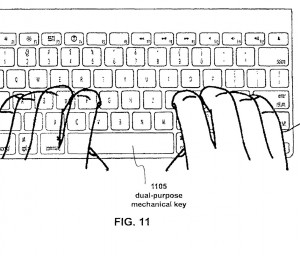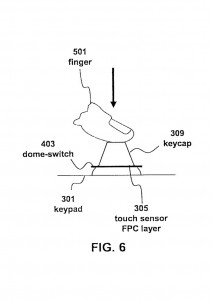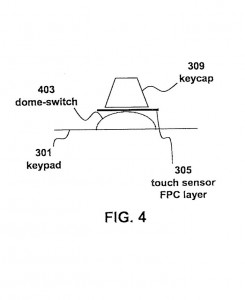



“If it doesn't log a keystroke shortly after sensing a touch command, it assumes that the user intends to use the touch-sensitive portion of the key. If it does log a keystroke within a pre-determined period, it ignores the touch-sensitive portion and lets the user type normally”.



 Laptop & Tablet Parts
Laptop & Tablet Parts




















